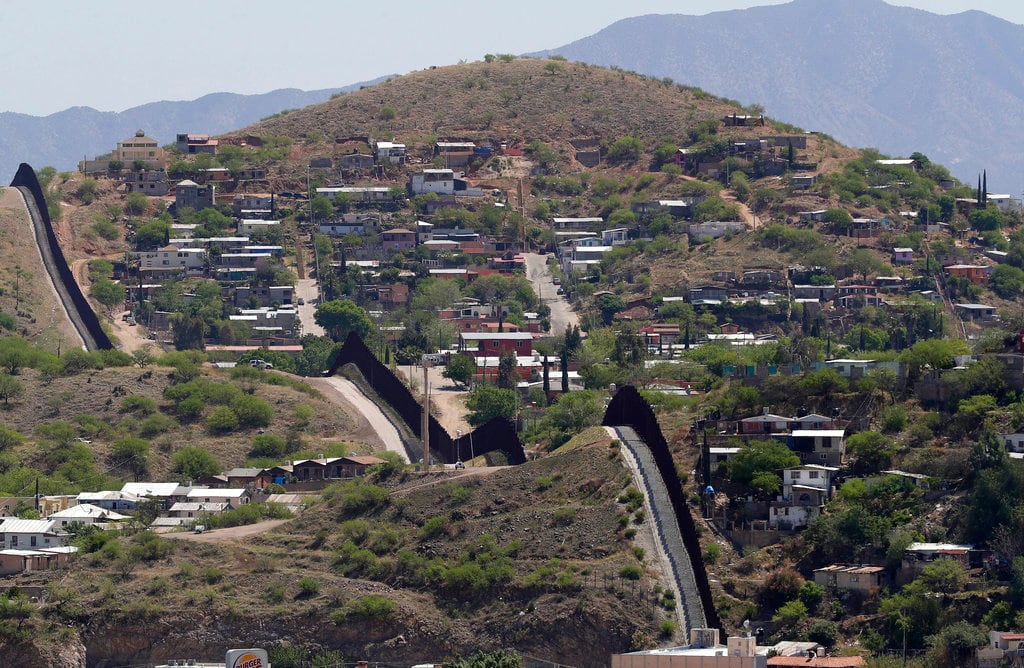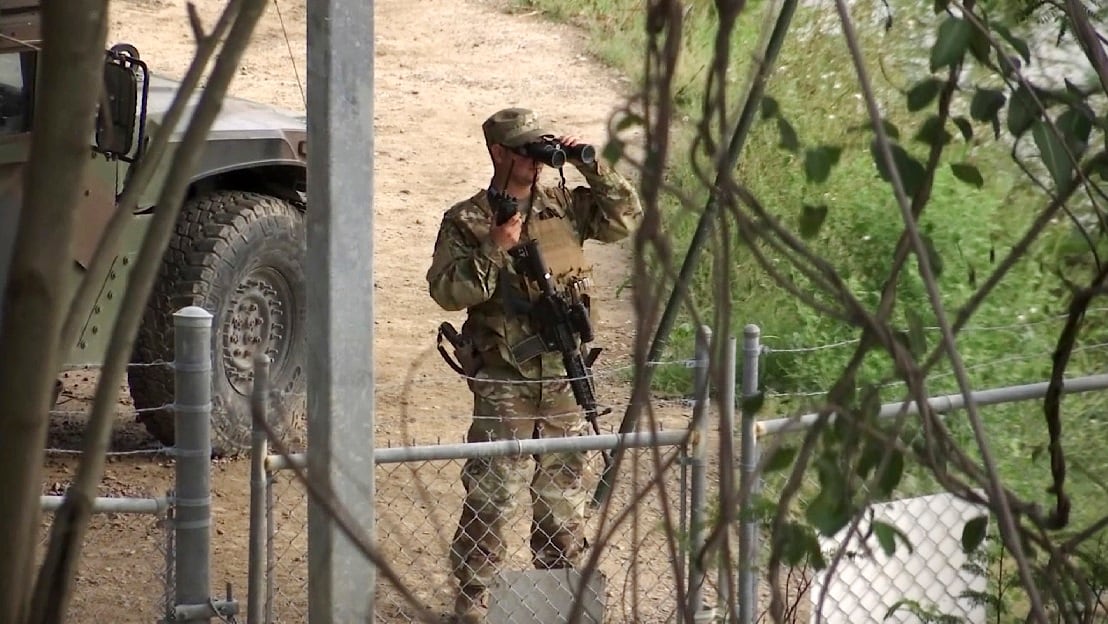SAN DIEGO — California Gov. Jerry Brown is crystal clear that his National Guard will help President Trump go after drugs and thugs on the Mexican border, but not immigrants. Drawing that line may be hazy.
Brown’s pledge of 400 troops allows the president to boast that governors in all four border states back his mission to send the Guard on its third large-scale deployment since 2006. It helped bring commitments from Arizona, California, New Mexico and Texas to about 2,400 troops — above the low end of Trump’s target of sending 2,000 to 4,000 troops to the border shared by the four states.
The Democratic governor, who cast his decision as a welcome infusion of federal support to fight transnational criminal gangs and drug and firearms smugglers, broke from his Republican counterparts from the three other states by insisting that his troops will have nothing to do with immigration enforcement.
But some experts were skeptical that Brown will be able to force his vision of the mission on California’s Guard members participating in Trump’s operation.
“I think it’ll be very difficult for the California National Guard to be able to walk that fine line because those things in the field are indistinguishable,” said Eric Olson, deputy director of the Wilson Center’s Latin America program, who specializes in organized crime and security. “It’s not like someone crossing the border says, ‘I’m carrying drugs.’ How can you tell?”
Trump praised Brown on Twitter Thursday, but did not address the governor’s conditions for not taking an immigration role for California troops. The president said Brown was “doing the right thing and sending the National Guard to the Border. Thank you Jerry, good move for the safety of our Country!”
The Border Patrol’s mission of preventing people from entering the U.S. illegally has not changed in its 94-year history. But its nearly 20,000 agents also seize hundreds of tons of marijuana every year, along with other drugs. The agency has also emphasized anti-terrorism efforts since the 2001 attacks on the World Trade Center and Pentagon.
Andrew Selee, president of the nonpartisan Migration Policy Institute, said Brown’s move is clearly about how it will be seen politically in a state that overwhelmingly opposes Trump’s crackdown on illegal immigration. The governor, in his decision to let the California troops participate, gave himself “wiggle room” to withdraw the Guard members if they get involved with immigration, which Trump will definitely want to prevent.
“Everyone has an interest in this working out,” Selee said. “The lines will blur a bit but federal and state governments will try to make sure this doesn’t blow up. That doesn’t work for anyone.”
Other border governors have fully embraced Trump’s directive. Texas Gov. Greg Abbott, who will contribute about 1,400 troops, has said troops will “help ensure we are doing everything we can to stem the flow of illegal immigration.”
Details on the Guard’s exact assignments have been trickling out since Trump last week announced his plan to send troops to the border on April 4.
The Arizona National Guard said Wednesday that 112 of its 338 troops will provide air support, like flying helicopters, from a base in the town of Marana, near Tucson. Another 60 are being sent to border town of Nogales for what Maj. Gen. Michael McGuire called ground-based missions, without providing details.
They are not required to carry guns for their duties but can do so if they feel they need to for their own protection, McGuire said.
The Texas National Guard, which already has troops in the Rio Grande Valley and Laredo area, scouts for illegal activity by air and land and reports any findings to the Border Patrol.
Abbott said Thursday that he was waiting for instructions from the federal government but that his understanding was that the troops “will in no way be involved in any type of apprehension or confrontation process.”
The New Mexico National Guard has not yet publicly defined a precise role for its 250 troops.
Federal law, notably the Posse Comitatus Act of 1878, sharply limits military involvement in civilian law enforcement, creating a supporting role for Guard members. The Pentagon said last week that troops won’t perform law enforcement functions or interact with people detained by border authorities without its approval.

From 2006 to 2008 under the administration of former President George W. Bush, the Guard went to the Mexico border and fixed vehicles, maintained roads, repaired fences and performed ground surveillance.
Its second southern border mission in 2010 and 2011 ordered by former President Barack Obama involved more aerial surveillance and intelligence work. People involved in both operations say the Guard was the Border Patrol’s “eyes and ears.”
Brown said Wednesday that the California troops cannot guard anyone in custody for immigration violations, participate in construction of border barriers or have any other supporting role in immigration enforcement. He did not elaborate on the Guard’s specific assignments or how troops would be insulated against immigration work.
California National Guard spokesman Lt. Col. Thomas Keegan said Thursday officials “generally do not discuss the specifics of operations, tactics, techniques and procedures and we certainly do not want to tip our hand to the transnational criminal gangs, human traffickers and illegal firearm and drug smugglers we’re targeting.”
Jobs for the approximately 55 California troops already at the border include engineering to repair roads, fences and culverts and working with federal and state law enforcement on anti-terrorism and anti-drug operations, Keegan said.
___
Associated Press writers Paul Weber in Austin, Texas, and Kathleen Ronanye in Sacramento, California, contributed to this report.




